8th Bike trial on 2 July 1977 – riders from Oelbronn take part
Three riders from outside the area, from a club involved in motorcycle trials – and also in cycling – took part in the 8th bike trial for the first time. They were from RMSC Oelbronn, which stands for “Rad- und Motorsport Club Oelbronn” (Oelbronn Cycling and Motor Sports Club), a club founded in 1955. I knew it from motorcycle trials and had ridden my 50cc Zündapp trials bike in a TSG (Trialsport-Gemeinschaft) Southwest competition in Oelbronn two weeks earlier, on June 19, 1977.
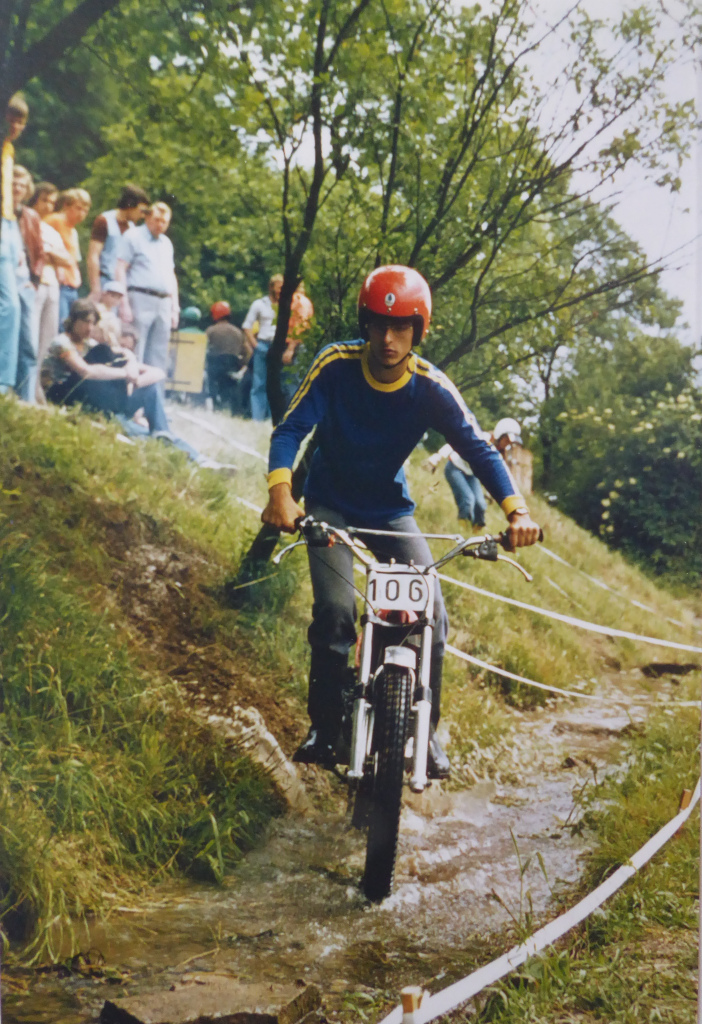
In Oelbronn, I naturally inquired about the cycling department's trials activities, but they referred to other disciplines, such as cycle ball, etc., and not bike trials. I told them about my event two weeks later in Bad Nauheim, and when the people from the club in Oelbronn were not averse to the idea, I promised to send them a sketch that would help them find their way to the start of the signposting. And sure enough, the Oelbronn team came! The three boys from Oelbronn competed in the under-12 age group, which one of them, Uwe Lilge, won hands down – he probably has a trophy with “SJR Bad Nauheim” written on it somewhere. It was the first time that riders from outside the area had competed in the bicycle trial in Bad Nauheim. And it was the beginning of bicycle trials in Oelbronn, which was now established and produced several well-known riders such as Nina Reichenbach and Jonas Friedrich over the next thirty years.
Thomas Barczikowski's victory in the over-12s category (his younger brother Dirk won the under-12s category two years later at the 11th bike trial) didn't really catch anyone's attention at the time. However, it is worth mentioning because three years later, at the age of seventeen, Thomas Barczikowski began a professional career as an ice hockey forward in Bad Nauheim and became one of the celebrated stars (“Barczi”) in Bad Nauheim's star forward line.
Four times seven sections (see bottom of the results list shown) were hard work, and on this hot day, the regional riders had already completed the journey on their bikes to the not-so-nearby terrain in the forests of the Winterstein area near Ober Mörlen, which was not to be underestimated. Perhaps this was why “old stars” such as Holger Gmyrek and Gunther Erbe, who had shone at previous events, gave up after a few laps with penalty point scores that meant they were unlikely to win. They certainly hadn't reckoned with Thomas Barczikowski, who was competing for the first time, learning with every lap and impressively demonstrating his athletic abilities. Only Rolf Benthaus was able to keep up with him to some extent – as the eternal runner-up, I would like to highlight Rolf Benthaus from Nieder Mörlen here as a consistently good rider who lived up to the motto: “Always good is very good!”
Helmut Rühl, the artistic cyclist from the Germania Cycling Club in Rockenberg (near Bad Nauheim), was also there again. I found it very appealing that someone who was normally used to doing gymnastics on a bike in the hall was practicing his skills on a bike in a completely different way here and broadening his horizons. He also brought riders to the trials from time to time.




9th Bike trial on April 22, 1978 – the Fürstenhageners participate for the first time

I was, of course, in contact with Günter Schlieper, who had launched the Velo Trial Cup in Fürstenhagen the year before. It was agreed that the Fürstenhageners would come to my bike trial in Bad Nauheim – the accompanying advance notice in the WETTERAUER ZEITUNG makes it clear that the Fürstenhageners were expected in Bad Nauheim.
Since the Kirchner Hut cannot be reached by car, the start and finish were closer to the Eichberg Hut this time, which is not far from where section 5 was located during the first bike trial (see the map on the page “Bad Nauheim – Trial on May 25, 1974”). Here, too, a former quarry had left numerous hollows in the forest, which – in combination with trees that had grown there later and their roots – provided numerous opportunities for sections. This was the first time that this terrain had been used more intensively for trials. From the report below in TRIALSPORT, I conclude that a few of the seven sections may also have been located on the grounds of the nearby Kirchner Hütte, because – to be honest – I can no longer remember the details of the sections here. But knowing myself – and this is also evident from the report at the time – I certainly did not forego a certain amaount of course distance.
The reports published below show that participation in this trial was disappointing. Perhaps I should not have mentioned the out-of-town riders in the advance notice, as this may have deterred the locals. The “experts” from outside raised the level and brought a breath of fresh air – but in doing so, they stole the show from the local riders, who had previously been the center of attention, and reduced them to marginal figures. This conflict exists everywhere, even within clubs. Years later, in San Feliu de Codines in Catalonia, it led to the creation of today's Legends Trial, which aims to bring back the former riding enjoyment of former local riders and all others who cannot or do not want to keep up with the ever-increasing level of riding, in sections that are challenging but still feasible – in SFDC with the bikes of yesteryear.




10th Bike trial on November 11, 1978
Although no riders from outside the area took part in the 10th bike trial at the Frauenwaldschule, I would still like to present the event here because of some beautiful photos—most of them in black and white, as neither the regional WETTERAUER ZEITUNG nor TRIALSPORT magazine could use color photos.









11th Bike trial on September 29, 1979 – second visit by the Fürstenhageners to Bad Nauheim
It was the second time that the bike trials riders from Fürstenhagen came to Bad Nauheim and the last time that Bad Nauheim was not part of the Velo Trial Cup. In terms of organization, the trial was a great success with around 50 participants and four laps with seven sections, and I had made a special effort in view of the appearance of the Fürstenhagen riders, who had announced their participation. This time, the course was extensive and also included the forest slope. After section 2 at the waterworks, there was a steep climb to the top, where a forest path on the slope led to section 3, which was located along the path. From there, a beautiful intermediate section led diagonally down the slope again. Halfway up this slope passage, in a small hollow covered with fir trees, was the fourth section, which consisted mainly of roots, before heading back down to the familiar terrain with the remaining three sections. This time there were a few uphill sections that rewarded riders who used their heads to take advantage of opportunities to build momentum or find favorable lines. This also applied to the local riders with their stock bikes, who found it easier everywhere. When setting up the sections, I always made sure that all sections were feasible with a stock bike in the normal classes.


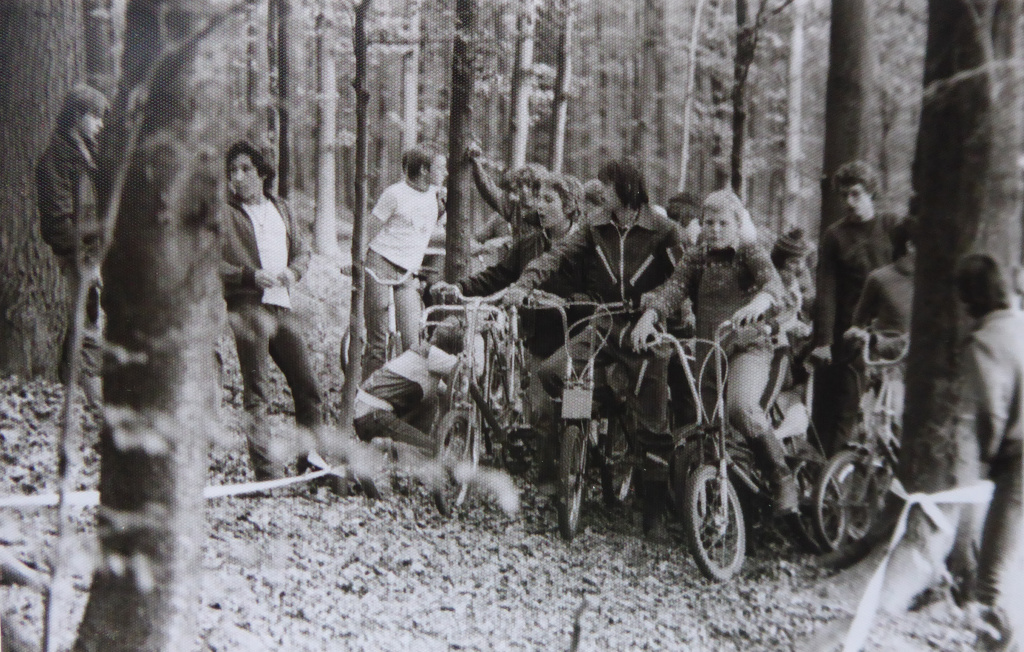
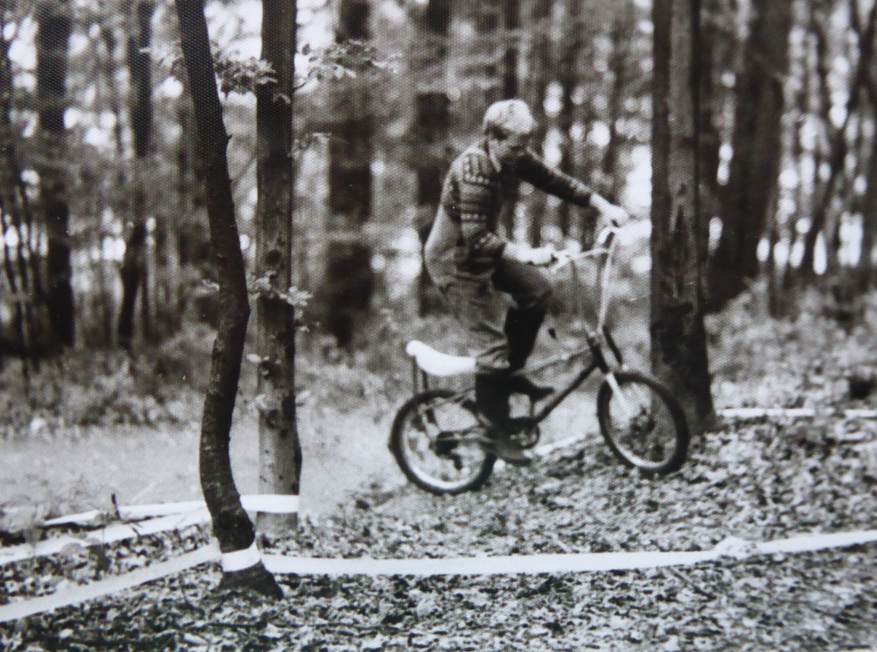
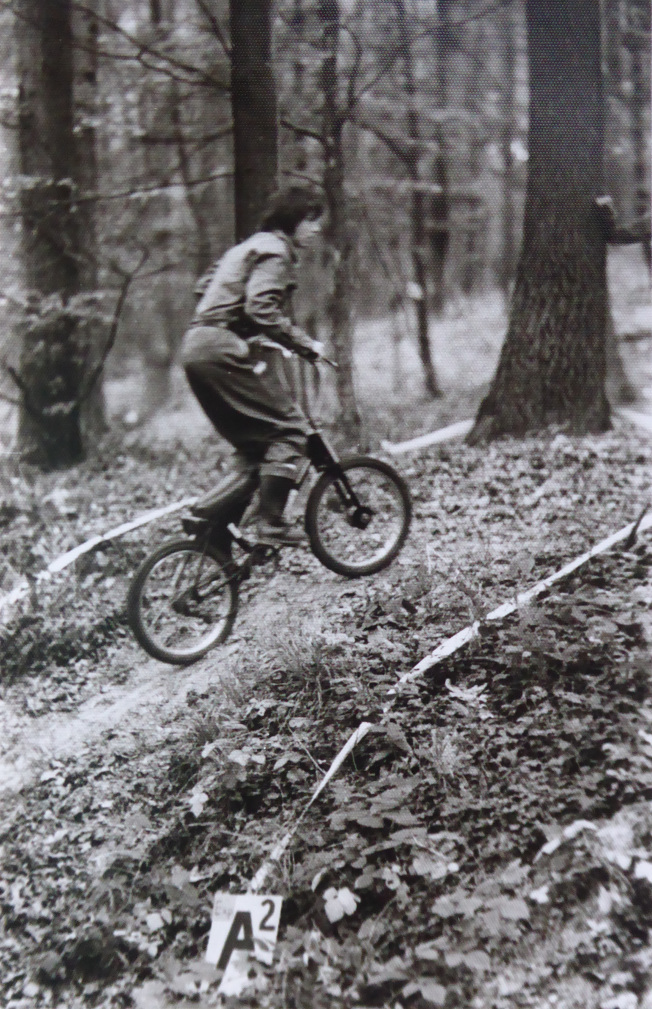
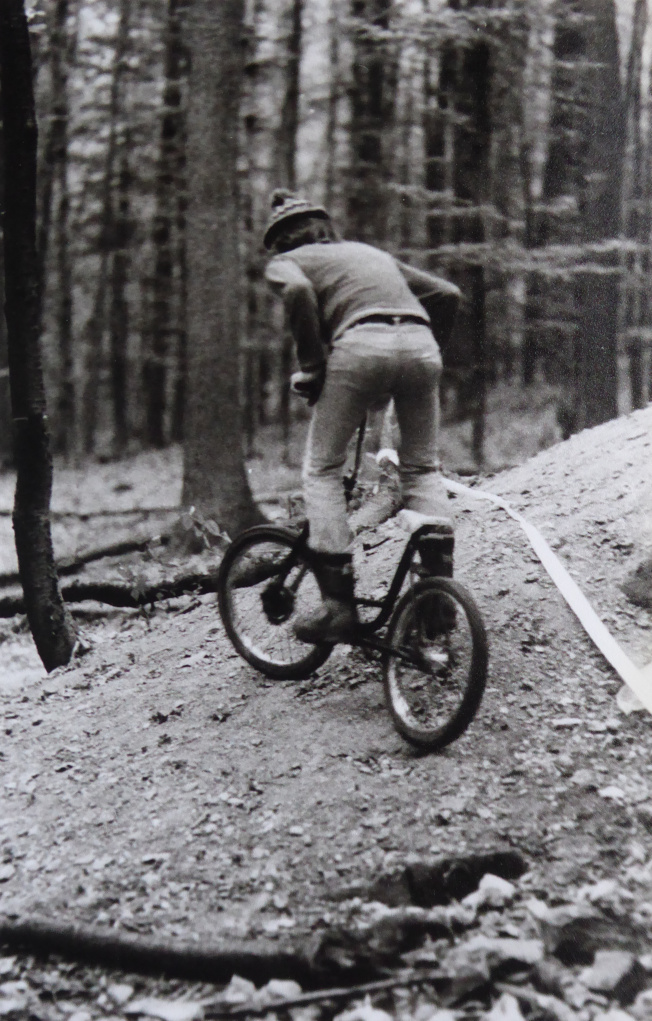
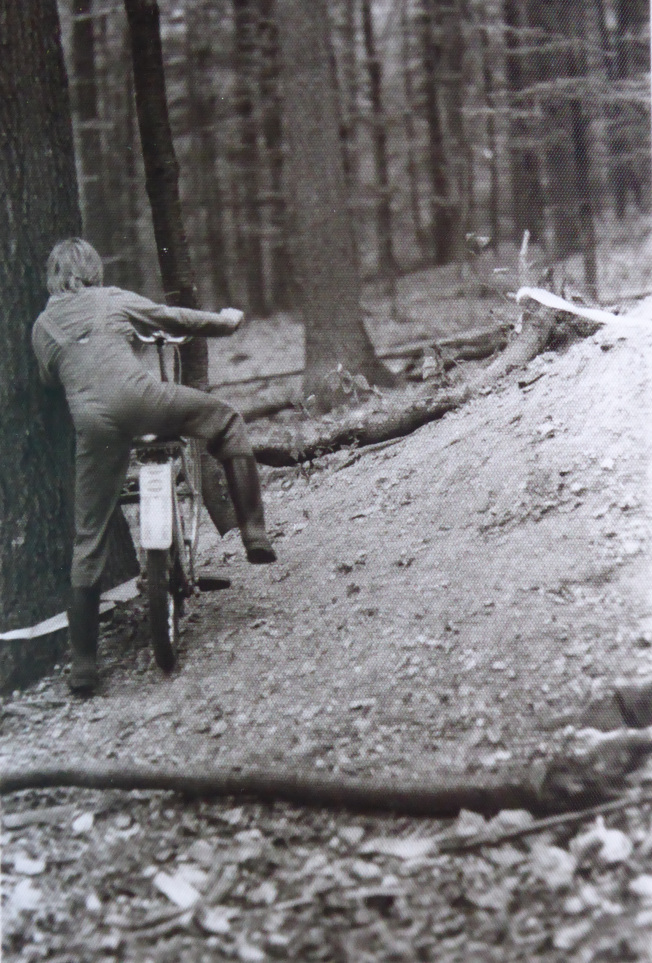
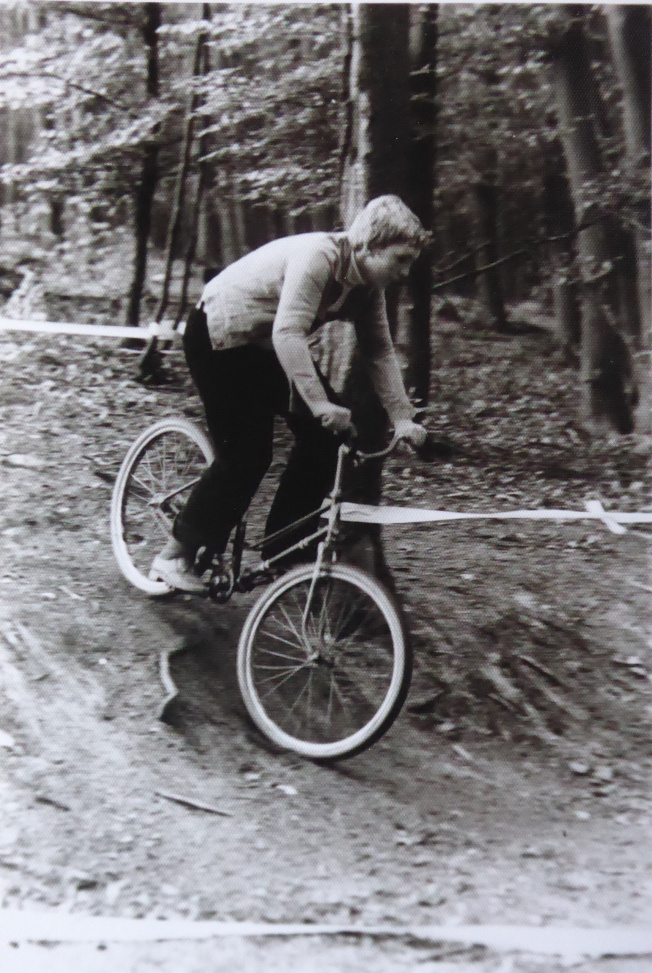
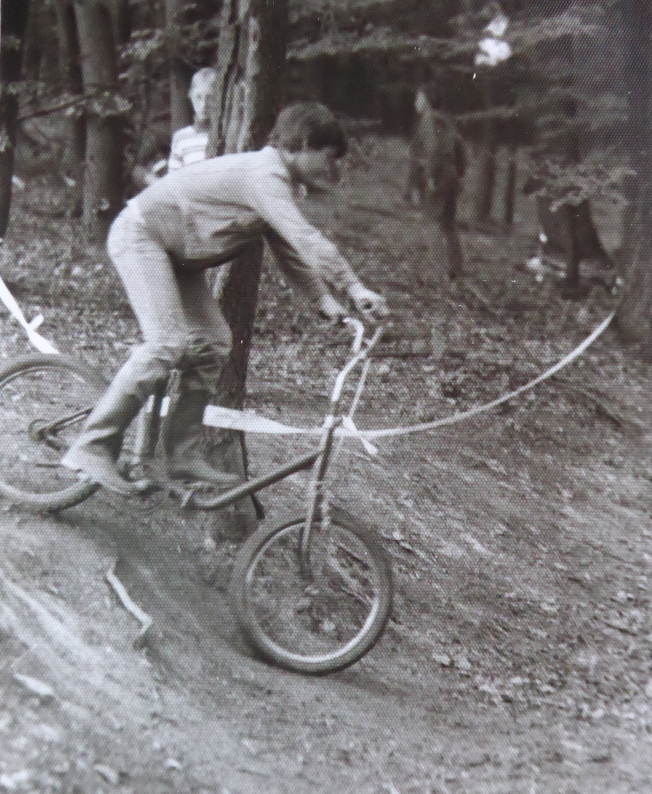
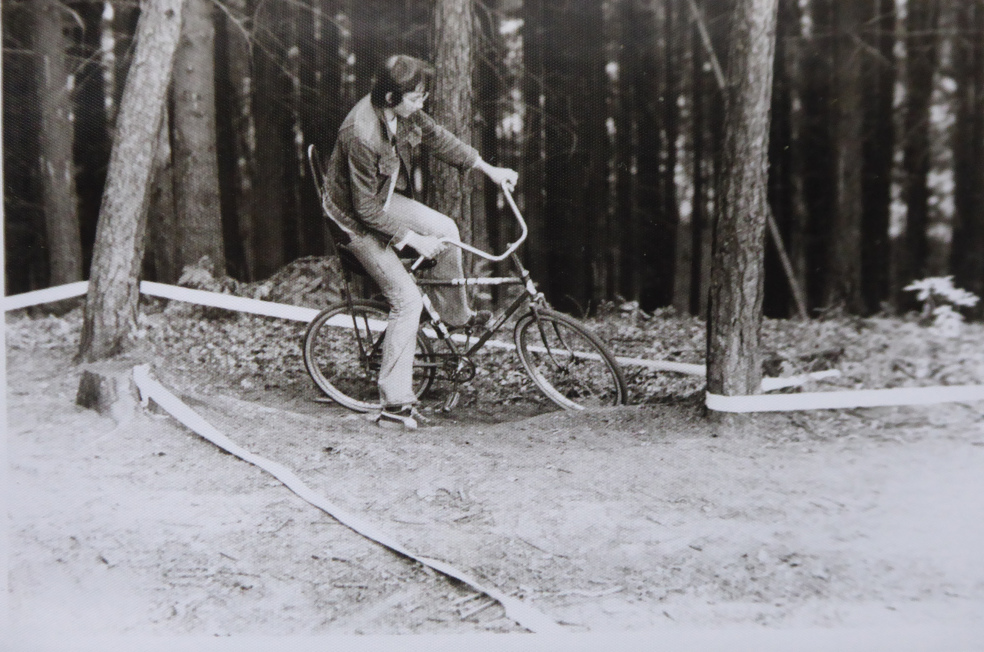
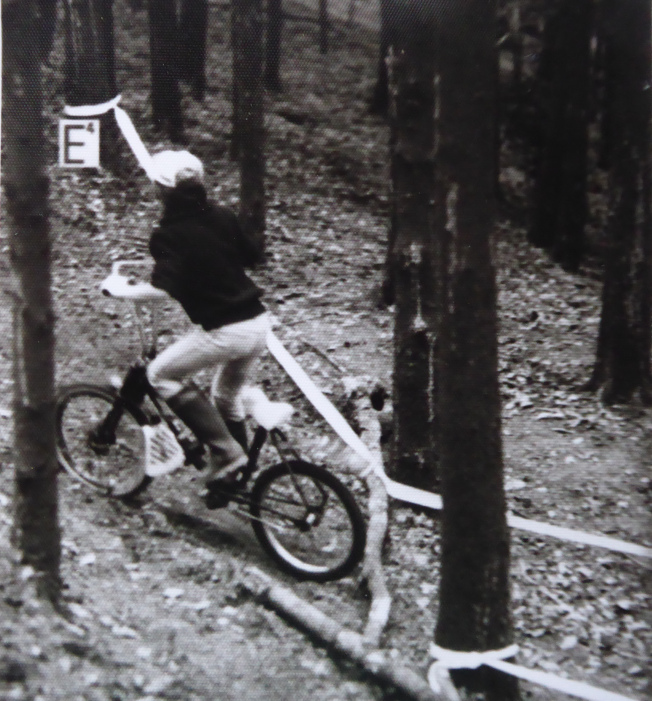
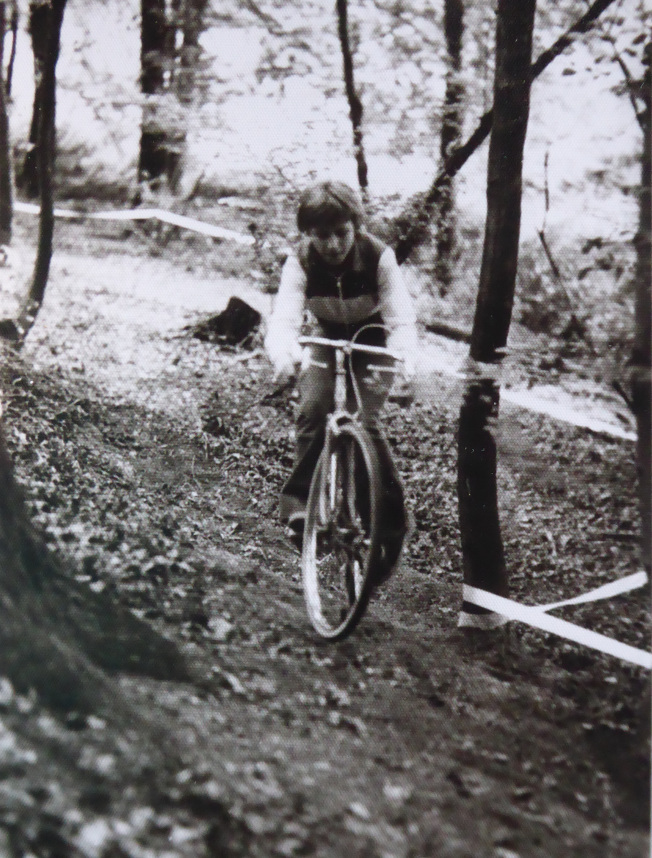
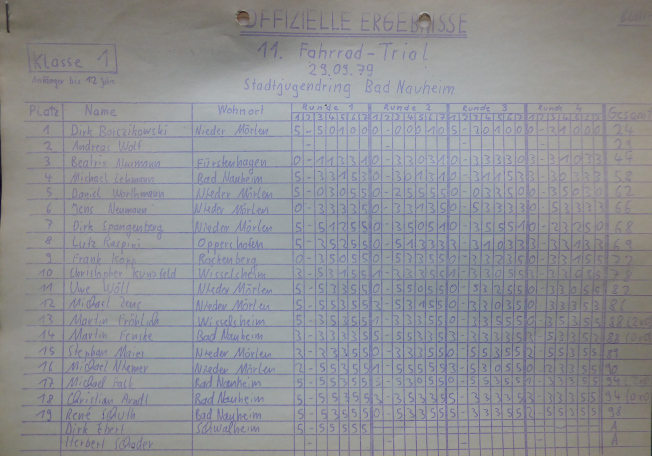
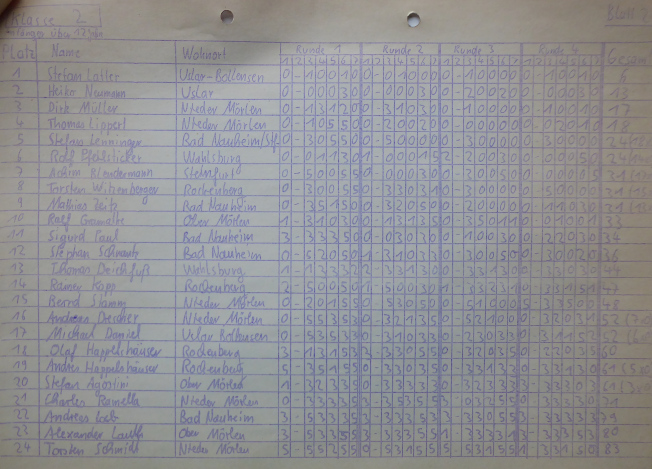
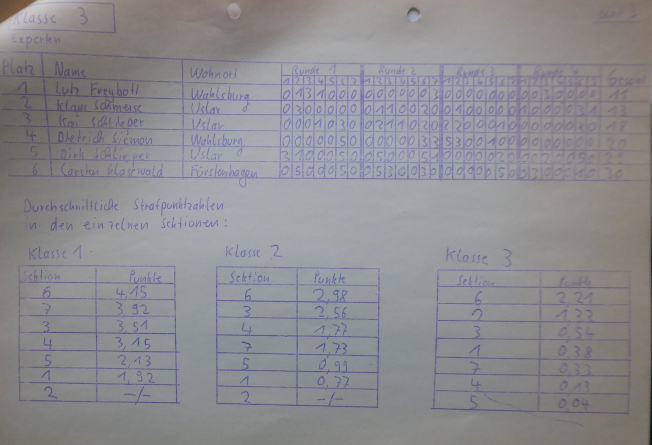
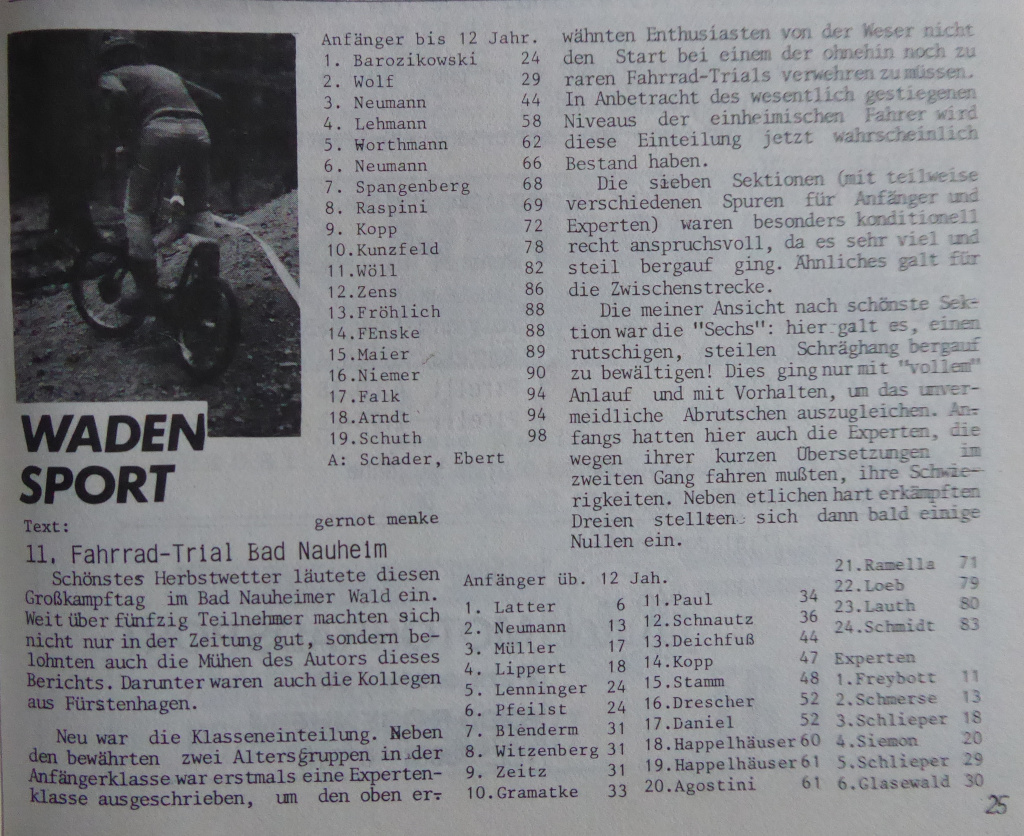
12th Bike trial on 28 September 1980 – for the first time, the bike trial in Bad Nauheim counts towards the Velo Trials Cup
For the first time, the bike trial in Bad Nauheim counted as a round of the Velo Trials Cup. That's why the Emmendingen riders Hansjörg Rey and Andreas Zipf, had also signed up this time, meaning they would be facing the Fürstenhagen riders for the first time. Accordingly, I had made a special effort this time and found observers for eight sections, which had to be completed four times.
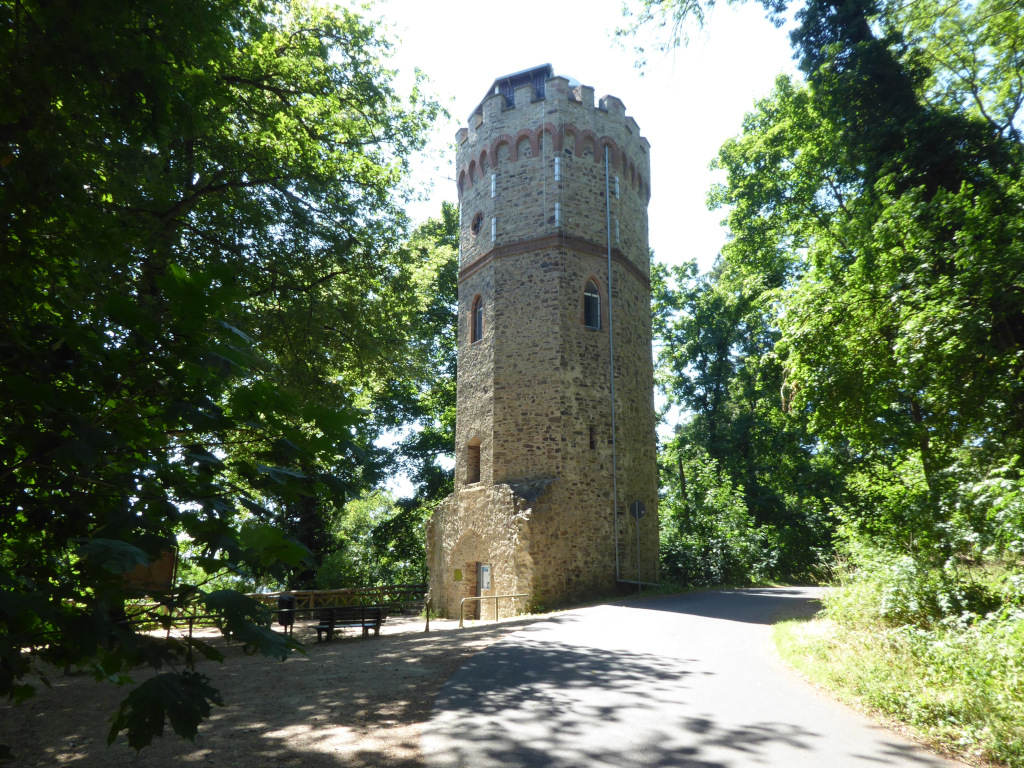
In terms of the scenery, it was perhaps the most beautiful of the Bad Nauheim bike trials. The terrain high above the town is spectacular in itself – from the café very close to the site, you can look out over Bad Nauheim to the Vogelsberg mountains. Added to this is the atmosphere of old buildings from every conceivable era. The 13th-century church tower, which was raised to a viewing tower in 1866, is now used as an observatory. 100 metres away are the foundations of a Roman signal tower. At the Weber Hütte, one of the romantic shelters from around 1900, there is also the Wolfsgraben, which probably dates back to Celtic times and served to defend what is now Johannisberg. The Celts may have forgiven the fact that there were two beautiful sections on their defensive wall or in the trench, and the rocks found during excavations around 1900 in the Celtic wall, which were then placed in front of the Weber Hütte as rustic decorative stones, also made a great rock section. Unfortunately, these stones are now so overgrown that they can no longer be recognised – in 1980 they were exposed and everything was well maintained. I am attaching a photo.
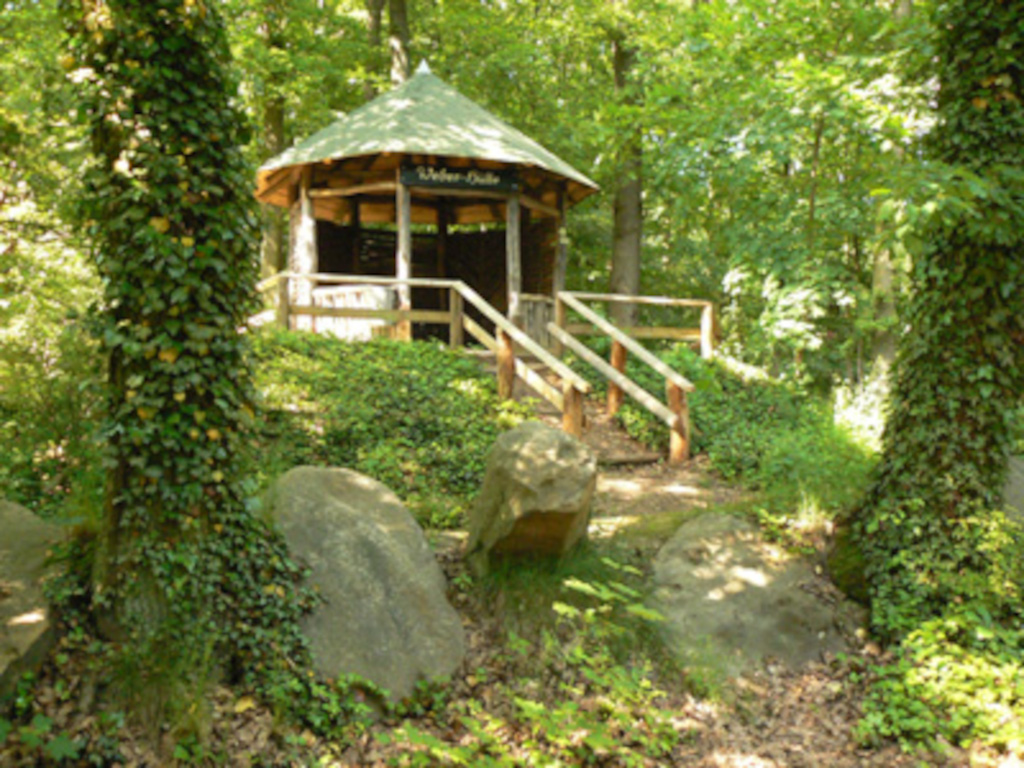
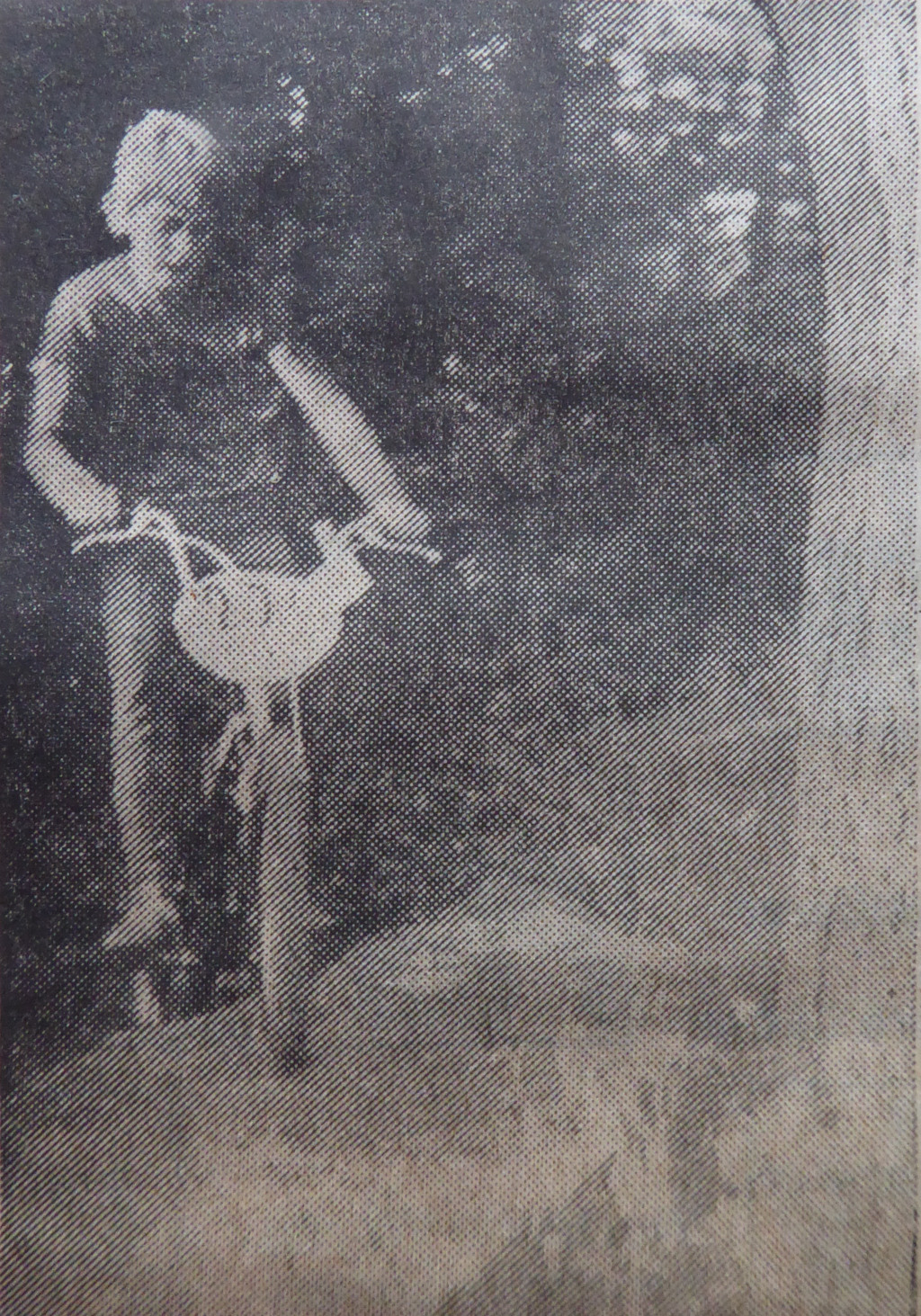
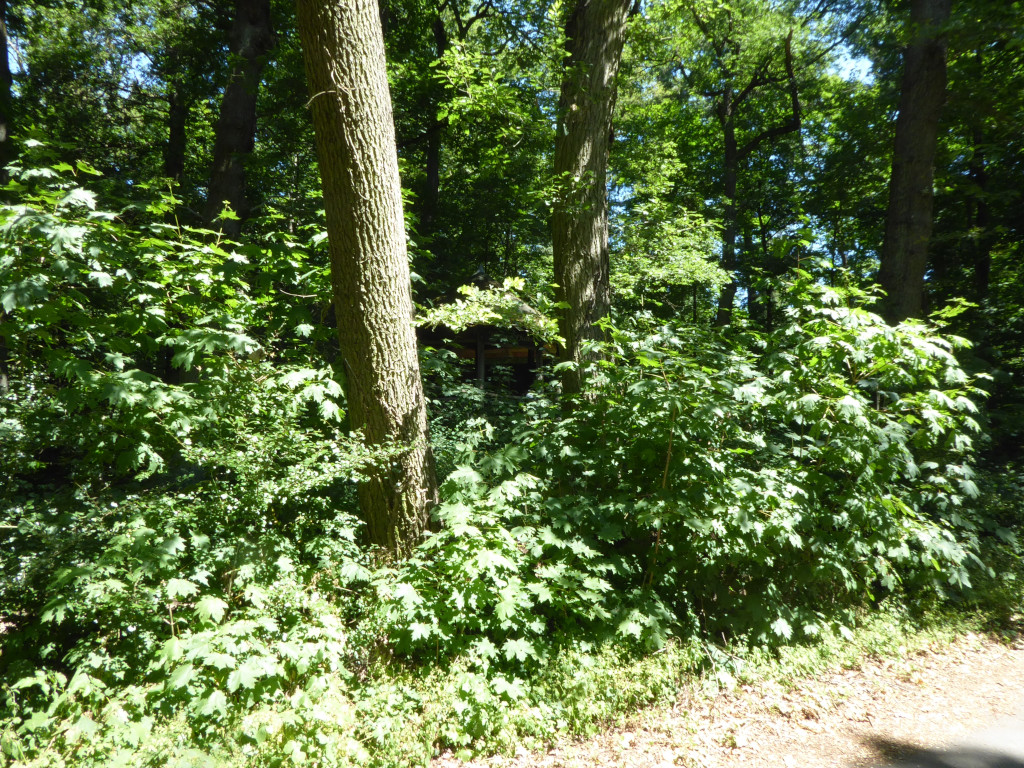
/
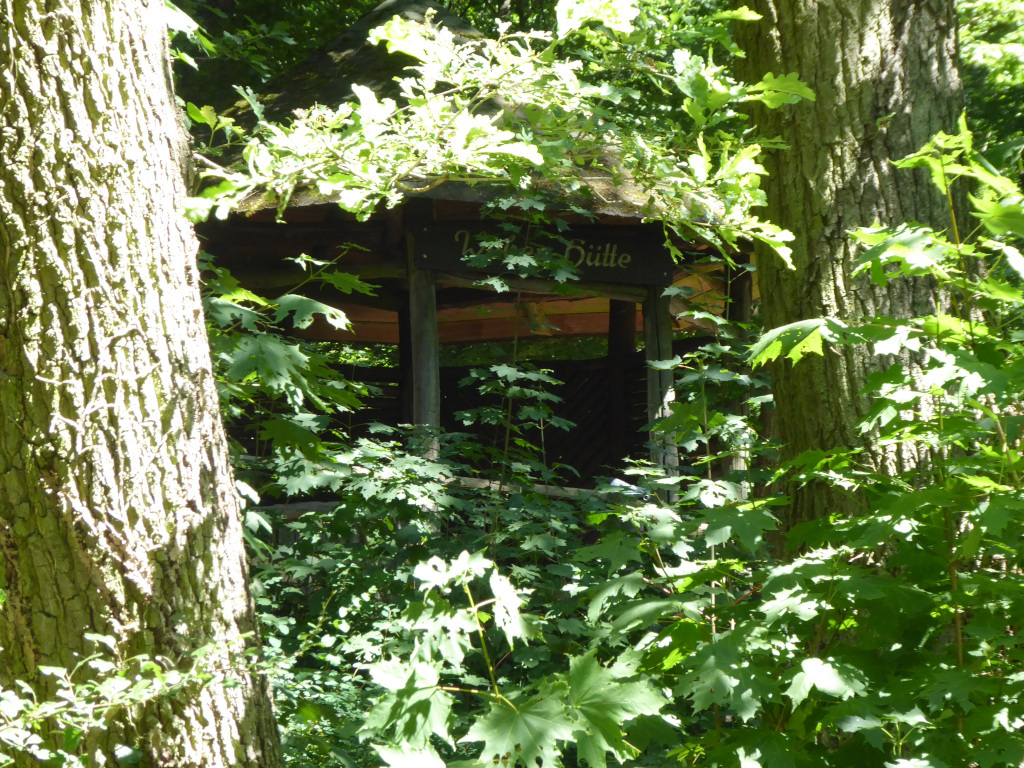
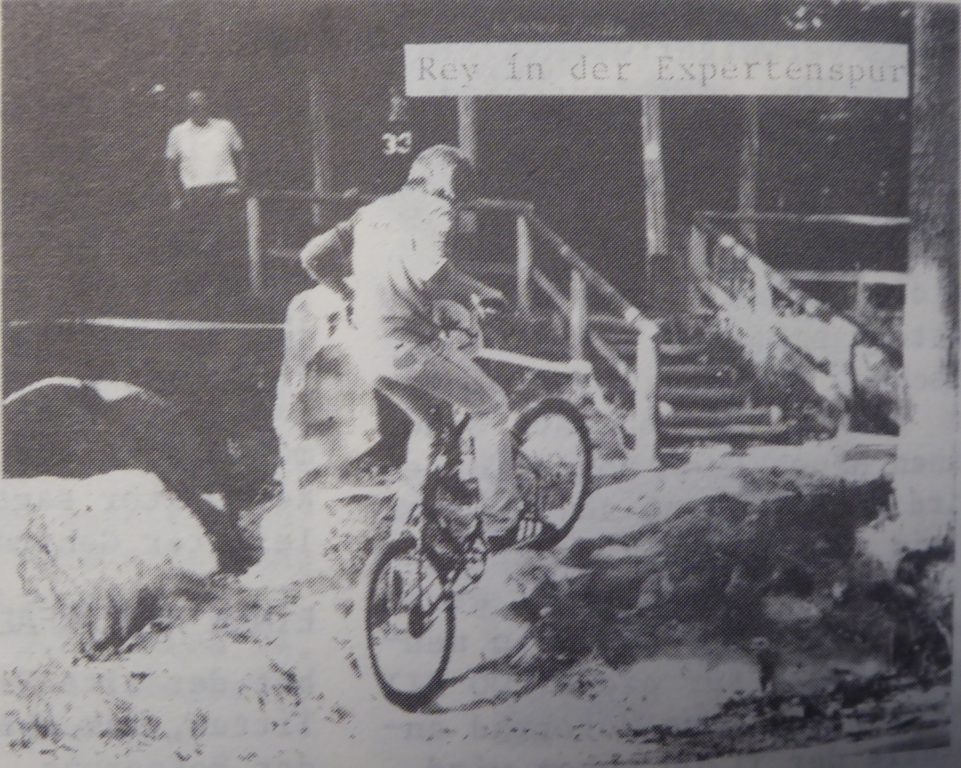
There was one downside, however. Time passed and the start time of 2 p.m. approached without the Fürstenhageners arriving! So this first VTP run in Bad Nauheim took place without the participation of the Fürstenhageners! Mobile phones did not yet exist, so no one knew whether they had broken down or even had an accident. As it turned out later, the Fürstenhagen team had simply forgotten the date! Günter Schlieper later told me on the phone, ‘You should have just called again beforehand!’ – but I had not expected the Fürstenhagen team to forget a VTP round. Of course, the Emmendingers were particularly sad, as they weren't there for VTP points, but had actually come to finally compete with the trial ‘stars’ from Fürstenhagen. I think you can see my disappointment at the drivers' meeting – at that point, no one knew exactly what was going on. Nevertheless, there were over fifty starters – with the Fürstenhagen riders, there would certainly have been 60.
Then I did something I rarely did in my own competitions: I took part myself so that the two Emmendingers weren't completely alone in the expert class. It was the only time I beat Hansjörg Rey, who was still on his way up at the time. And it was also my sections that I liked and had chosen myself. The downside was that I was only able to take a few photos this way. It was a great coincidence that the photographer from the WETTERAUER ZEITUNG was there this time and took some beautiful pictures. Paul Guse, who, incidentally, still had competed in the Trial Lamborelle in Belgium, promised to contribute his photos – he sent his prints directly to TRIALSPORT in Celle, where Felix mistakenly labelled the above photo with Andreas Zipf. Today, Paul would have simply sent me his photos by email, but in 1980 no one knew about that yet.
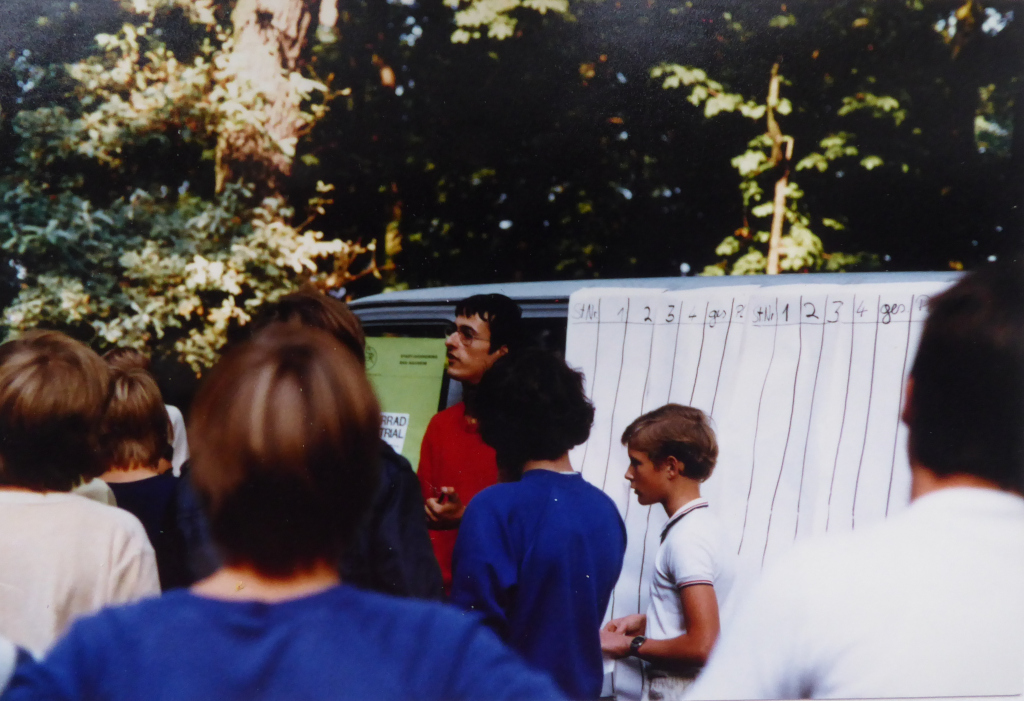
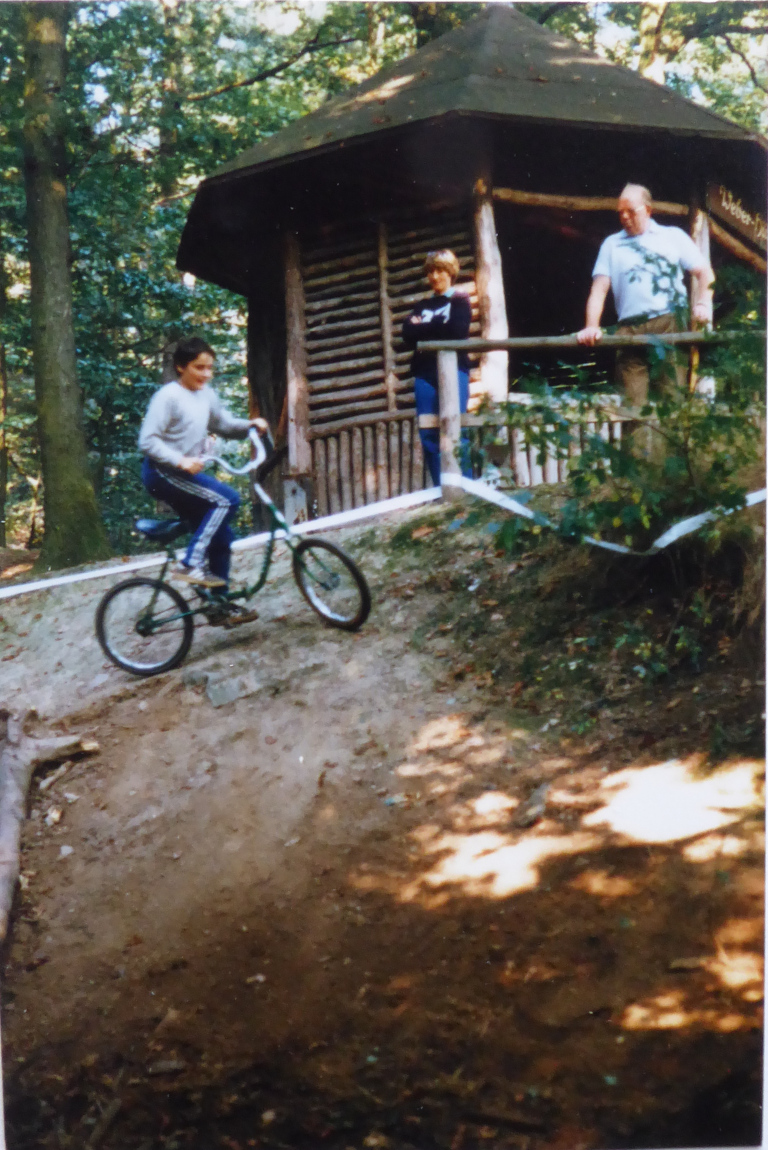
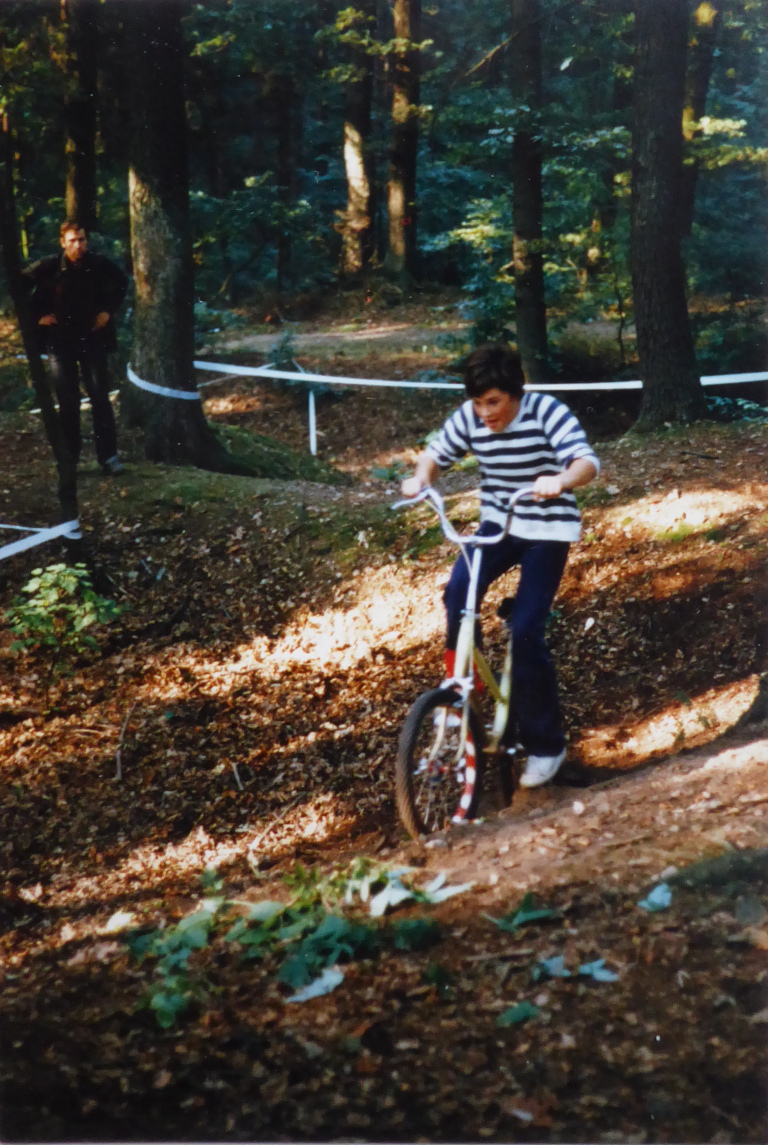
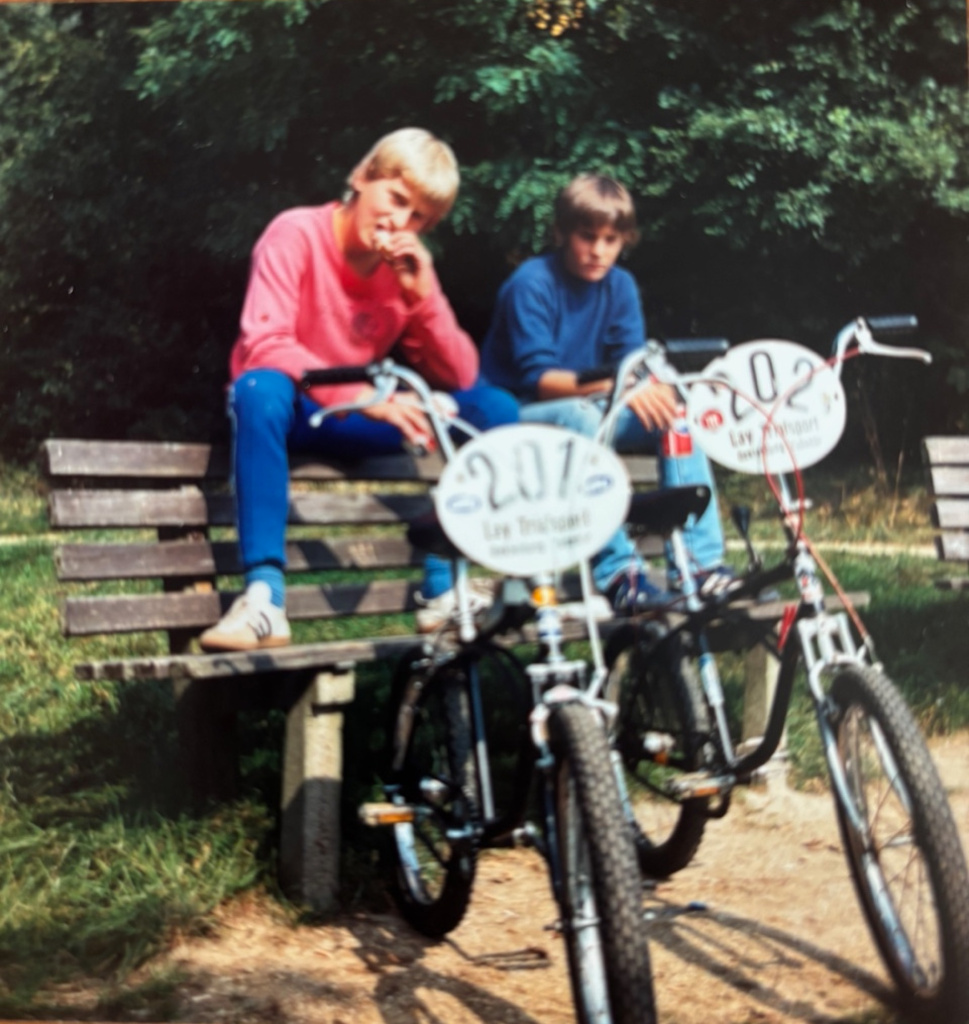
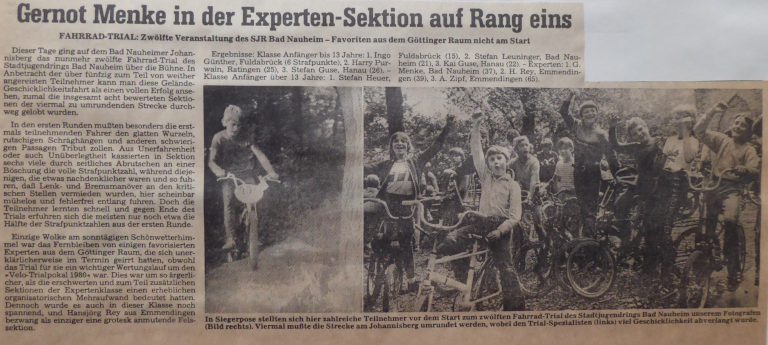
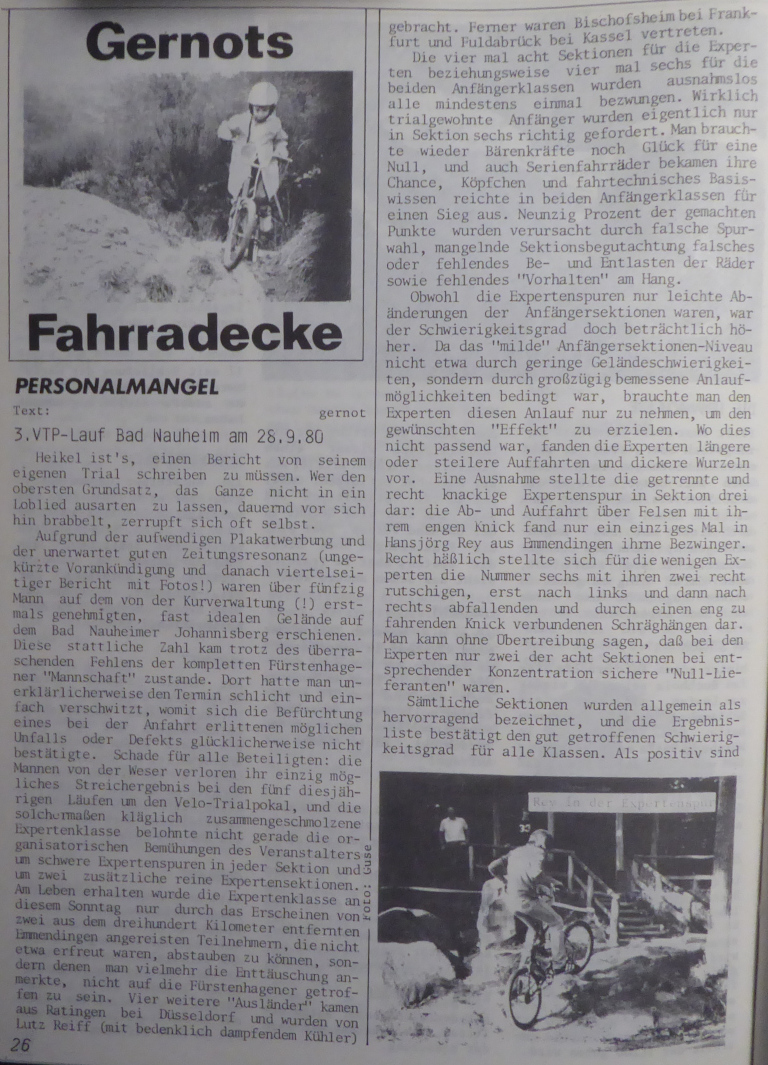
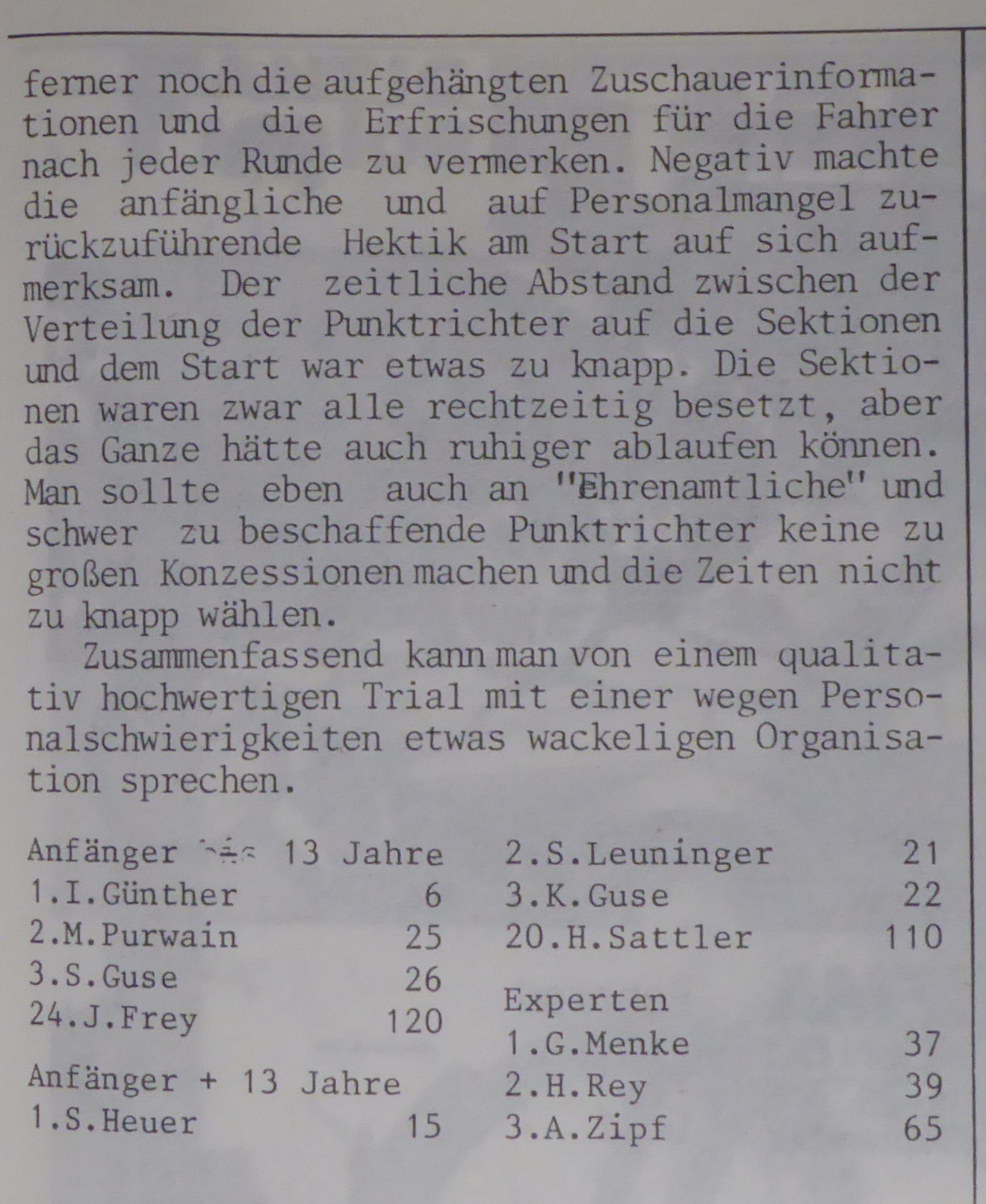
The other Bad Nauheim bike trials
The other Bad Nauheim bike trials – with the exception of the last two – also attracted participants from outside the town and were part of the efforts, spearheaded primarily by Günter Schlieper, to establish a German bike trial championship. The 13th bike trial on 20 September 1981 was a round of the Velo Trial Cup, the 14th bike trial on 26 September 1982 was a regional round of the German championship for the north, and the 15th bike trial on 11 November 1984 was an anniversary and test trial 1 on the grounds of the first bike trial in 1974 at the Kirchner Hütte, and the 16th bike trial on 28 September 1985 was a run for the North German Bike Trials Championship. However, these things are better suited to point 6 on the page ‘The expansion of the Velo Trials Cup to the German Championship’ and are therefore presented there, where relevant.
The last two bike trials in Bad Nauheim, the 17th in 1986 and the 18th and last in 1988 – the break in 1987 is significant – with just ten participants, already signalled the decline of the Bad Nauheim bike trials, which had lost touch with developments in bike trials and ultimately had only a few participants left. The reason for this was that, for various reasons, a club was unfortunately never founded in Bad Nauheim. As I learned much later, the father of a regular local participant had even been a locksmith – surely something could have been done. I found it touching that many years later, sometime in the nineties, a former participant rang my parents' doorbell and asked if the bike trials were no longer being held.
- It was an attempt to "force drivers to drive more again with the help of a maximum section time, without stifling the modern-day jumping. The whole thing was supposed to be a kind of compromise. Experience has shown that a time limit is not suitable for reviving the almost extinct practice of riding in sections. Hopping has become so perfect that it is hardly any slower than conventional riding. Despite the time limit, hopping continued and, in case of doubt, the risk of exceeding the time limit was accepted." In this trial, the experts had to cross the rock block for the first time, which is marked as ‘rock’ on the map in section 3 under point 5 on the page ‘Bad Nauheim – Bicycle Trial on 25 May 1974’. The results of the expert class at the anniversary trial in November 1984: 1. H.J. Rey 16, 2. A. Kromer 22, 3. O. Scheffler 23, 4. P. Marques 28, 5. H. Meyfarth 48, 6. B. Binz 51, 7. G. Merkel 61, 8. F. Oberle 64, 9. J. Will 80; in: TRIALSPORT 105 (December) 1984, p. 22. ↩